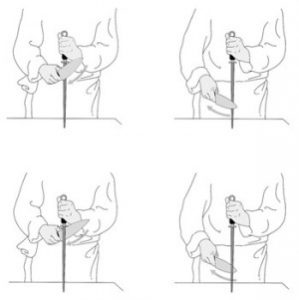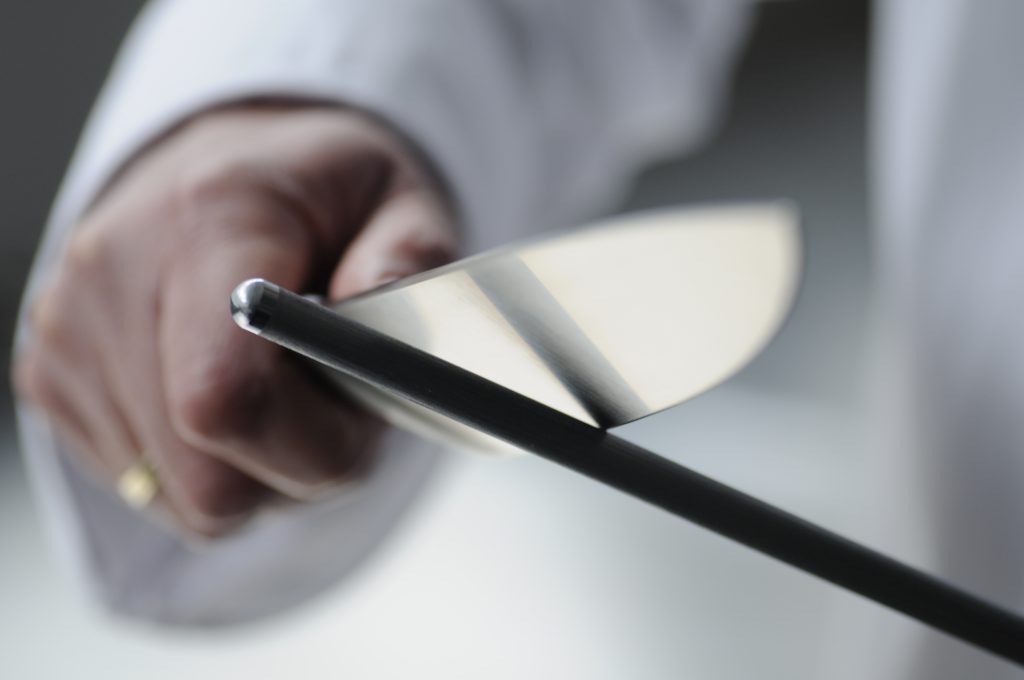Who Would Go to the Dentist Without Any Teeth?
While both honing and sharpening noticeably improve your knives’ ability to cut, slice and dice, the two procedures are distinctly different. Along the edge of the knife are microscopic teeth. As the knife makes contact with the cutting surface, these teeth are bent out of alignment. Honing is much like brushing the knives’ teeth: done at the correct angle, it will realign the bent teeth. Following this analogy, sharpening is the equivalent of going to the dentist. This process will remove the dulled steel and create a new edge along the knife. If honing is disregarded, sharpening a knife is much like walking into the dentist without any teeth.
To hone the knife, use either a honing steel or the finest setting of a pull-through sharpener. As a general rule, it is best to use a honing tool that is from the same manufacturer as the knife; these companies know which material and grain best shapes their steel. To properly use a honing steel, |1| place the knife edge at the top of the steel so that there is a 15° to 20° angle between the two. |2| Pull the blade simultaneously down and back, starting at the bolster and ending at knifepoint. It is important to use the entire length of the honing steel. |3| On the opposite side of the knife, complete the same steps. |4| Repeat the entire procedure three to four times. This should be done every two hours of knife use; in reality, it’s not something that can be done too often.

While sharpening can be done in-home with a pull-through sharpener, it is best to take knives into a professional sharpener or to send them to the manufacturer’s sharpening service. If using a pull-through sharpener with two stages, |1| place the bolstered end of the knife in the coarse setting. |2| Applying light pressure, pull through to the knifepoint. Repeat this four or five times. Move the knife to fine setting. |3| Use the steps taken for the coarse setting, again repeating four or five times. The knife now has a brand new edge. Because metal is actually removed from the knife, sharpening should not occur more than once or twice a year. For help sharpening with a whetstone or diamond steel, click here.


